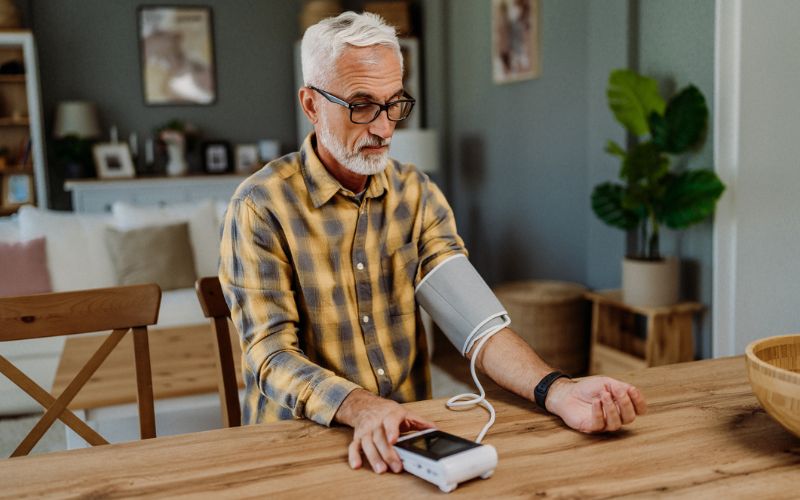Contact lenses are one of the most common ways to correct refractive errors. However, many people are unaware how to safely and effectively wear and care for their lenses.
Ensuring proper contact lens hygiene and safe handling practices is essential for maintaining good eye health and preventing potential complications. By following correct hygiene protocols and handling techniques, you can enjoy clear vision without compromising the health of your eyes.
How to Put in Contact Lenses
Before you begin, wash your hands with soap and water and dry them with a lint-free towel. Stand or sit in front of a mirror, and place the contact lens on the tip of the index finger of your dominant hand.
With your non-dominant hand, use your fingers to hold the upper eyelid. Meanwhile, pull the lower eyelid down with the middle finger of your dominant hand.
Look up and carefully place the lens on the lower white part of the eye. Be sure to blink after inserting the lens. If discomfort occurs, remove the lens, wet it with contact solution, and repeat the process.
How to Remove Contact Lenses
Wash your hands with soap and water and dry them with a lint-free towel. Stand or sit in front of a mirror, and look upward as you gently pull down the lower part of the eyelid with the middle finger of your dominant hand to expose the lens.
Using the index finger on your dominant hand, slide the lens to the white part of the eye and then pinch the lens between your thumb and index finger to remove it.
Upon removal, rinse any debris off using contact solution and place the lens in a clean case with fresh solution or throw it away if it is a disposable lens.
Types of Contact Solution
To ensure eye health and comfort, keep your contact lenses clean and hydrated. Choosing the right lens solution tailored to your lens type and cleaning habits is key.
Multipurpose Solutions: As the name suggests, these products combine cleaning, rinsing, disinfecting, and storing functions in one solution. Common ingredients include preservatives, to prevent bacterial growth, surfactants to clean and remove debris, humectants to keep the lenses moist, and buffering agents to maintain pH balance.
Hydrogen peroxide solutions: Hydrogen peroxide produces a chemical reaction that initiates oxygen bubbles to clean and remove protein deposits. However, hydrogen peroxide is harsh on the eyes, so neutralization is needed before placing contacts back in the eyes. Many solutions come with a built-in neutralizing system that converts hydrogen peroxide into water and oxygen.
Saline solutions: Saline (a mixture of salt and water) does not disinfect lenses, but it can be used to rinse of debris after the lenses are cleaned.
Risks of Improper Contact Lens Handling
Avoiding mishaps when caring for your contact lenses is key to safeguarding your eye health. Misusing contact lenses can lead to various eye issues, including:
- Bacterial keratitis: Poor hygiene habits (failing to wash your hands, for example), extended lens wear, and improper cleaning can all lead to harmful bacteria infecting your eyes, which can lead to keratitis, an eye condition characterized by the inflammation of the cornea.
- Corneal abrasions: Corneal abrasions are surface scratches on the cornea. Improper cleaning can cause introduce contaminants that can cause abrasions. Likewise, prolonged wear can lead to dryness and friction, which can scratch the cornea.
- Deposits and clouding: Failing to properly clean or store your lenses can allow protein deposits to build up. This can cause discomfort and cloud your vision.
- Acanthamoeba keratitis: Using tap water to rinse your lenses can introduce a harmful micro-organism known as Acanthamoeba, leading to severe eye infections. This contamination can result in painful ulcers, corneal scarring, and even permanent vision loss, sometimes necessitating a corneal transplant for vision restoration.
- Giant Papillary Conjunctivitis: Giant papillary conjunctivitis (GPC) is a condition triggered by poor lens hygiene, leading to uncomfortable bumps under the upper lid that can irritate the cornea and complicate contact lens use. GPC stems from habits like sleeping in lenses, inadequate cleaning, using old lenses, and eye allergies. Treatment often involves medication from the eye doctor and may necessitate refitting of contact lenses once resolved.
- Red rings around cornea: A red ring around the cornea after removing contacts often indicates too tight of a fit. As soft lenses age, they dehydrate and shrink, potentially fitting too tightly on the cornea, restricting oxygen supply, which is detrimental to your eye health. A red ring and lack of oxygen can also result from sleeping in lenses.
Contact Lens Best Practices
Always wash your hands before you put in or remove your contacts. Your fingers contain many germs, which are easily transferable to your contact lenses.
When handling contacts, carefully use the tips of your fingers and avoid using nails – nails can easily rip or tear the lens.
Be careful around showers, swimming pools, or any body of water while wearing contacts. These water sources contain microbes that can interact with your contacts to cause eye infections.
After a long day, it is easy to forget about taking out your contacts before bed, but try to avoid sleeping in contacts. Wearing lenses for more days than you should or sleeping in lenses not made for overnight wear can raise the risk of eye infections.
It is important to keep your contact lens case clean. Rinse the case every night with a disinfecting solution, and replace your case every few months. A case that is either old or contaminated increases the risk of bacterial growth that can lead to eye infections.
When cleaning your contacts and case, avoid using tap water and opt for sterile contact lens solution instead. Remember to air dry the lens case after cleaning.
Always carry a pair of backup glasses. Contacts can dry out late in the day, leaving your eyes in discomfort. Having glasses available allows you to make an easy swap without affecting your vision.



